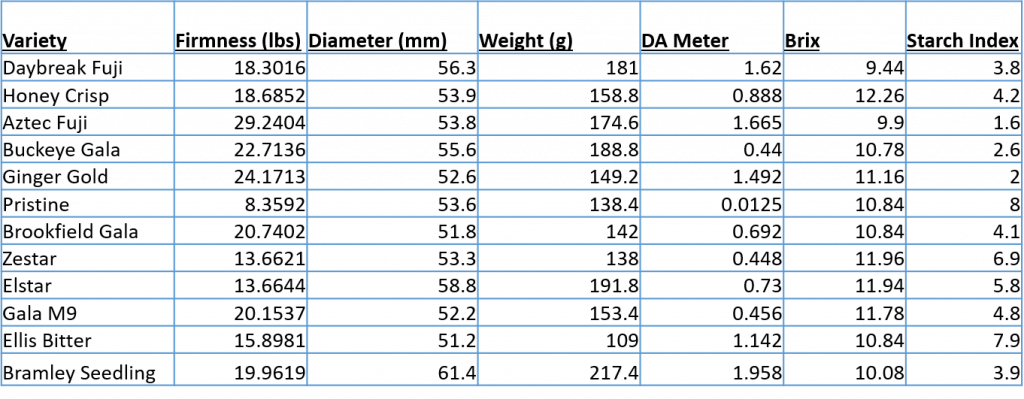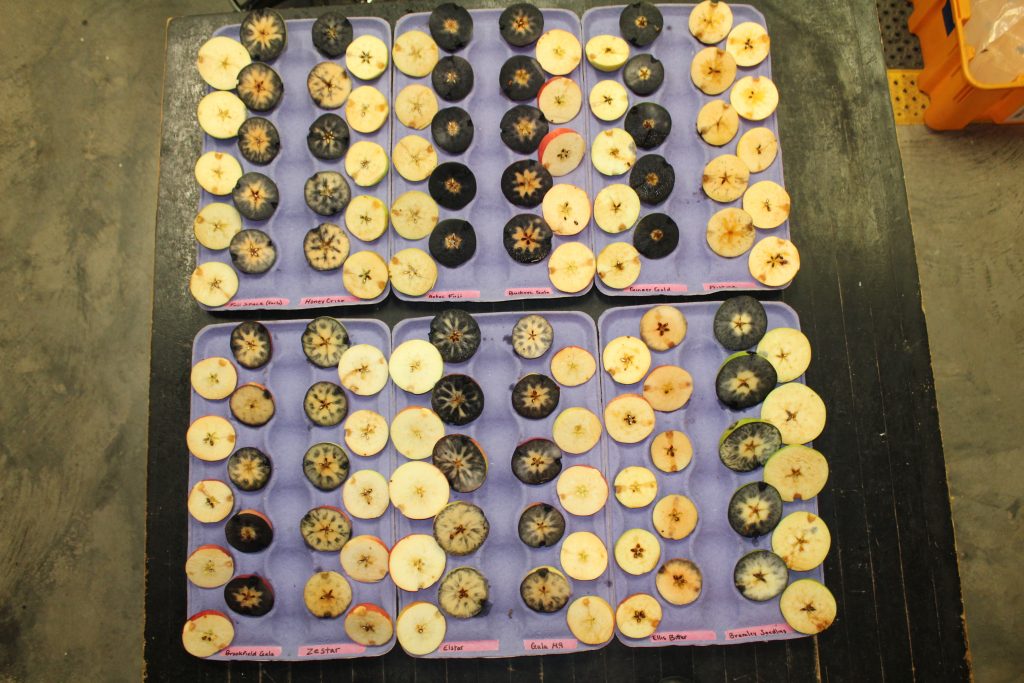Below is the apple maturity report for the Winchester/Fredrick county area (Table 1). We measured fruit firmness (lb), fruit color, total soluble solids (Brix), and starch conversion rate (1-8 index) for 12 apple cultivars grown in the AHS Jr. AREC’s and we will keep sending similar reports throughout the harvest season to help you determine the optimal harvest time for your apple varieties. More varieties will be added to the table below as we move through the harvest season. We have assessed fruit firmness, Brix, and starch index according to the methods we described previously in another blog post (https://blogs.ext.vt.edu/tree-fruit-horticulture/2012/08/23/harvest-maturity-resources/). We used a DA meter to measure fruit coloration. The DA device measures the chlorophyll content in the fruit, just below the skin. As the fruit ripens, chlorophyll degrades, and DA readings decline accordingly. Starch index, fruit firmness and, ‘to some degree’, Brix values, are used either alone or in combination to determine the harvest date for most commercial apple varieties. In Table 2, you will find the estimated firmness and starch index values at which apples should be harvested for controlled atmosphere (CA) storage and fresh consumption. If you don’t see your variety in the list, you can generally harvest your crop at starch index (3-5), firmness (> 16 lb), and DA reading (0.60) for CA storage. But if the crop is intended for fresh market, then wait until starch index of (5.5-7), firmness (13-16 lb), DA reading (0.35) and Brix (12-14%). Again, there are varietal differences, so it’s always recommended to use more than one maturity index to determine the optimal harvest time.

DA readings refer to the level of chlorophyll (green color) in the fruit, just below the skin. As the fruit ripens, chlorophyll levels decline. Therefore, low DA values are indication of fruit maturity. Starch index, fruit firmness, and, to some degree, Brix values are commonly used to determine the harvest date for most commercial apple varieties. Generally speaking, fruits intended for CA should be picked at starch index (3-5), firmness (> 16 lb), and DA reading (around 0.60). Apples intended for fresh consumption should be harvested at starch index (5.5-7), firmness (13-16 lb), DA reading (0.35), and Brix (12-14%).

, 2021.


